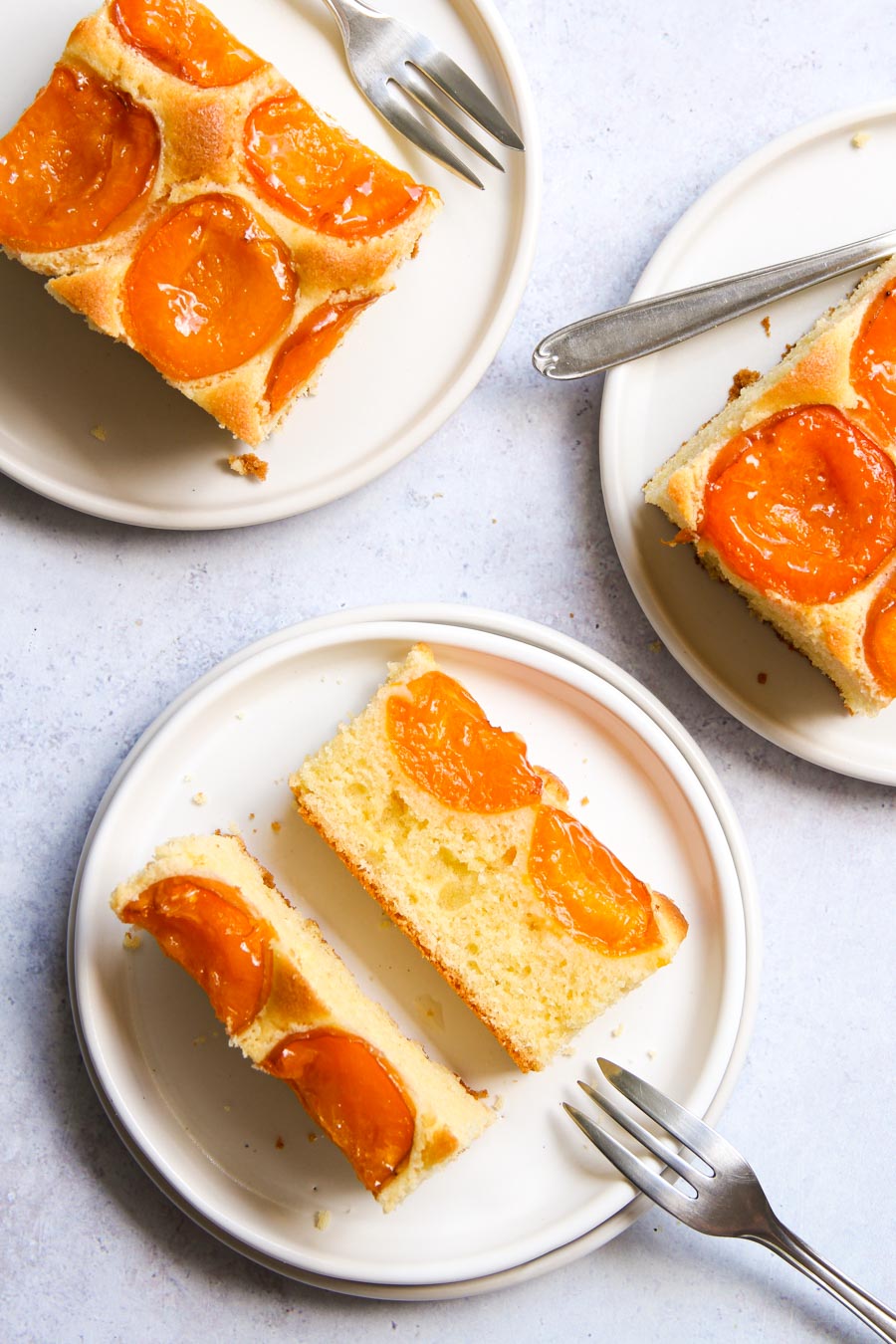
This fluffy sponge cake topped with fresh apricots is one of Austria’s most beloved cakes. “Marillenkuchen”, as we call this light apricot sheet cake in Austria, is easily my favorite summer cake!
Apricots in Austria
In the scenic Wachau valley along the Danube, about an hour from Vienna, apricots grow in abundance. July marks the beginning of harvesting season.
During this time, farmers will sell freshly picked apricots at stalls along the main roads. So it’s not surprising, that Austria is kind of famous for its apricot cuisine.
Some of the most iconic and traditional apricot based dishes are sweet apricot dumplings, apricot jam and compotes, apricot strudel and cakes, as well as high-quality distillates and liqueurs like apricot schnapps.
By the way: Did you know that you can make delicious homemade amaretto liqueur using apricot pits? Try it some time.
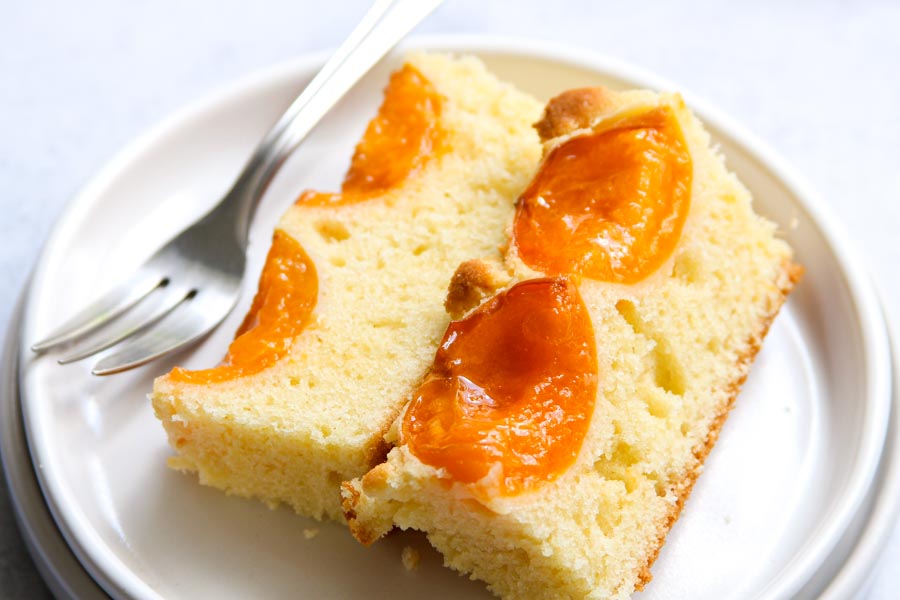
About this apricot cake
The cake is made of a light sponge cake. I additionally add sour cream to the batter, which is not traditional, but makes a soft, light and airy crumb.
The apricots on top go soft, sweet and juicy during baking and are clearly the highlight of this cake. You can make this cake with other stone fruit, like plums too. By the way: I adapted the recipe for this cake from my Easy plum cake.
This cake has the perfect sweet and tart balance. It is fruity and not too sweet. If you have a sweet tooth, you can give it a light dusting of powdered sugar before serving. Just like they do in Austria.
Pan and sheet sizes
The cake is light, fluffy, and tall – if you bake it in a 9×13 inch pan (23×33 cm) as I did here.
You can also use a jelly roll pan (10×15 inch / 26×38 cm) or large European-size baking sheet (12.5×16 inch / 32×40 cm), but the cake will turn out a bit flatter. In fact, traditionally the sponge is supposed to be not as thick as shown in the pictures. However, I prefer it that way.
Step-by-step recipe for apricot cake
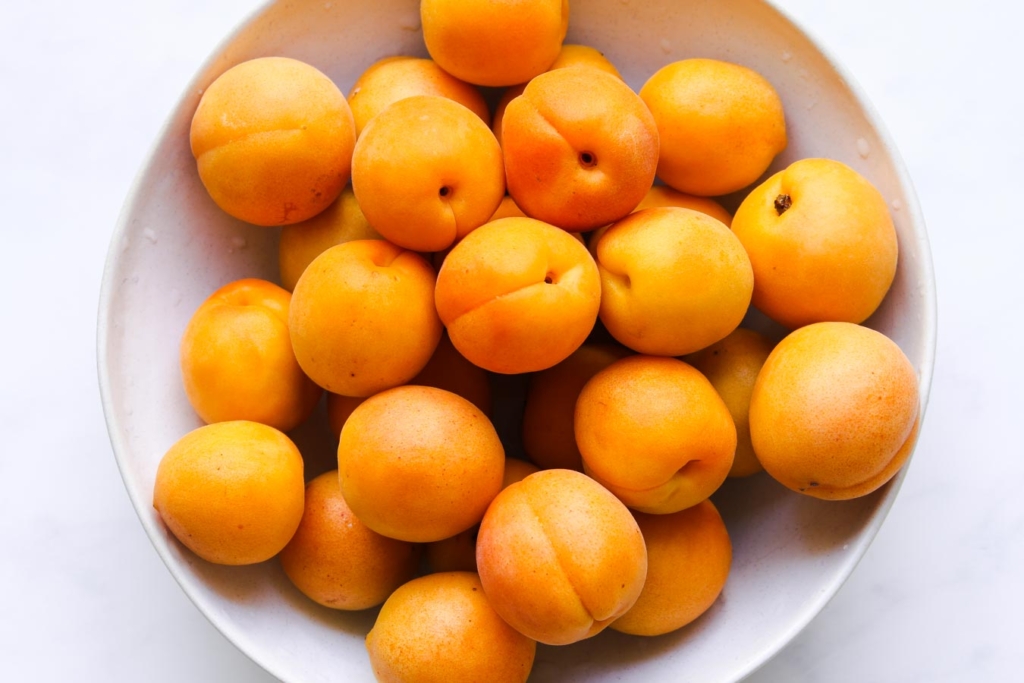
Wash, halve, and pit the apricots, and set aside. Tip: You can use the pits to make homemade amaretto.
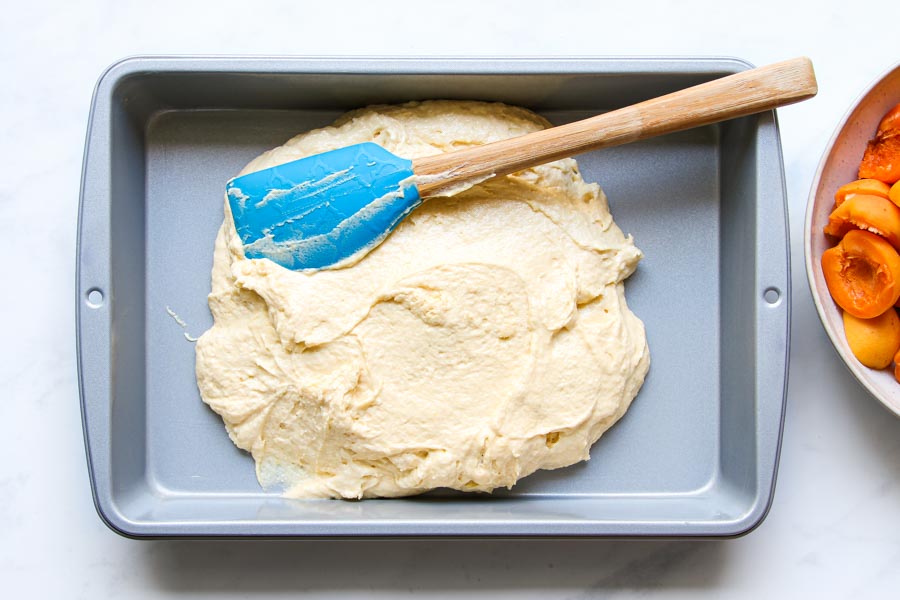
Mix all ingredients into a batter and pour it into a greased 9×13 inch pan or a large baking sheet.
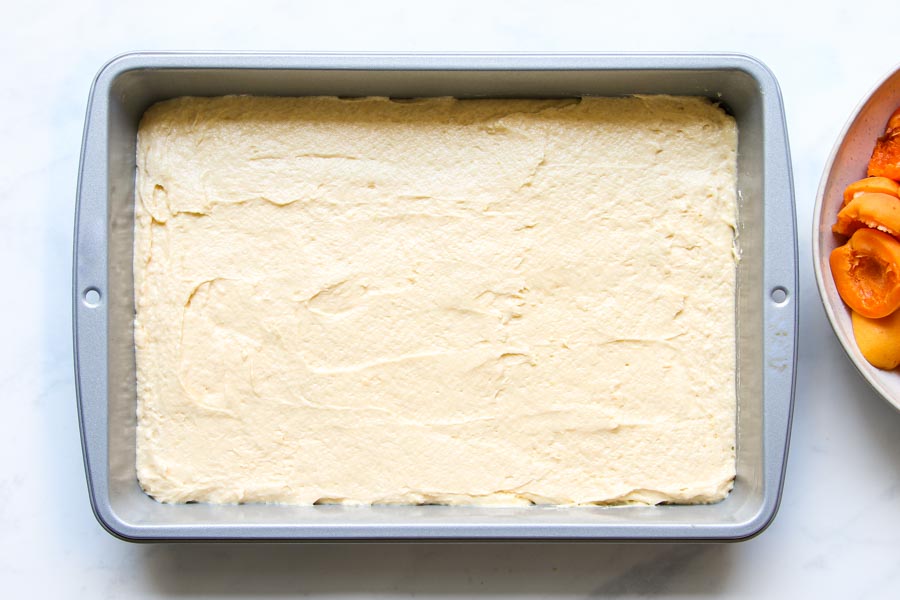
Spread the batter evenly.
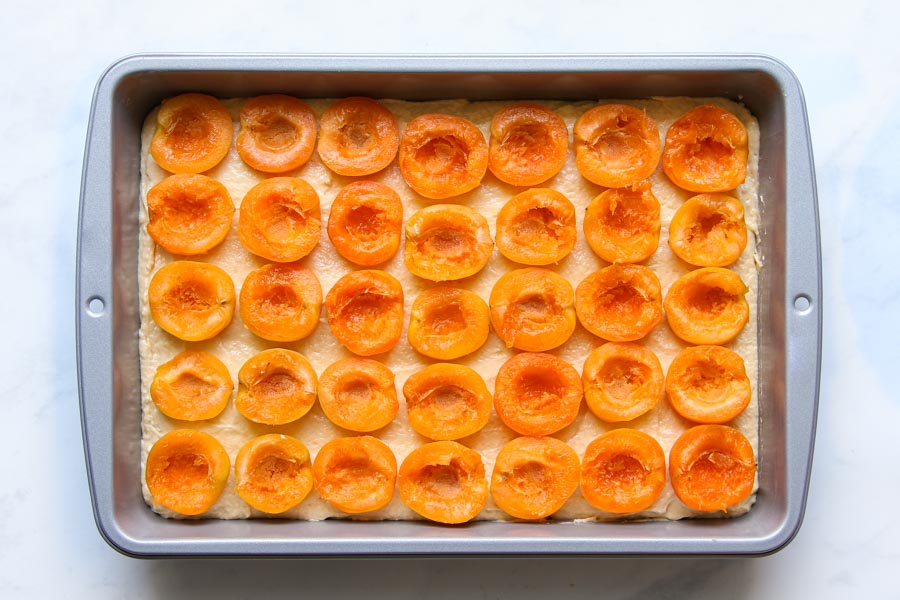
Top batter with apricot halves, skin side down. Distribute them evenly and leave only a little bit of space between them (straight rows will simplify cutting the cake).
Make sure the cut side on top is placed horizontally so that the juices stay within the fruit halves while baking. I know it’s tempting, but don’t press the apricots into the cake batter. The cake will rise up around the fruit.
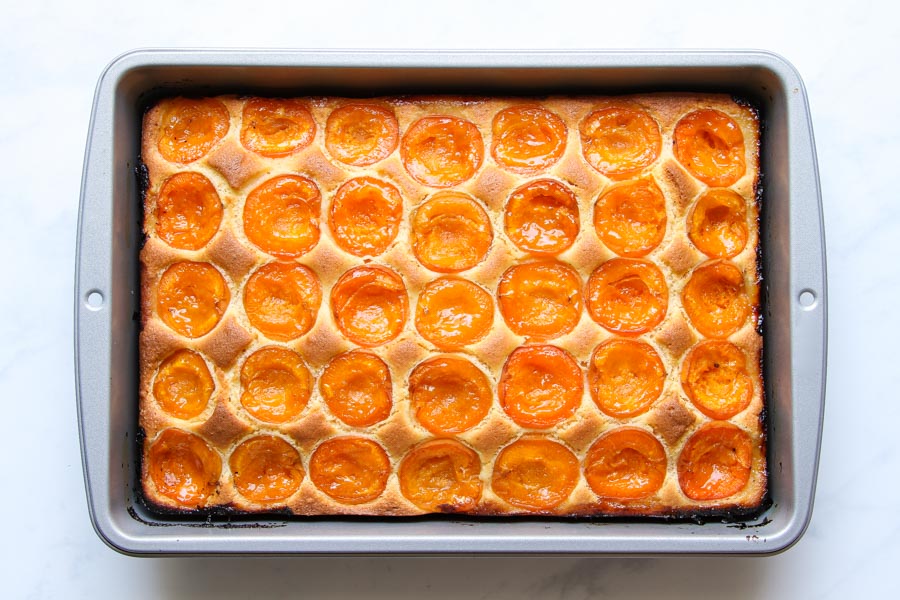
Bake the cake for about 45 minutes at 350 °F (175 °C) until golden. A wooden toothpick, inserted into the cake should come out clean or with a few crumbs clinging to it.
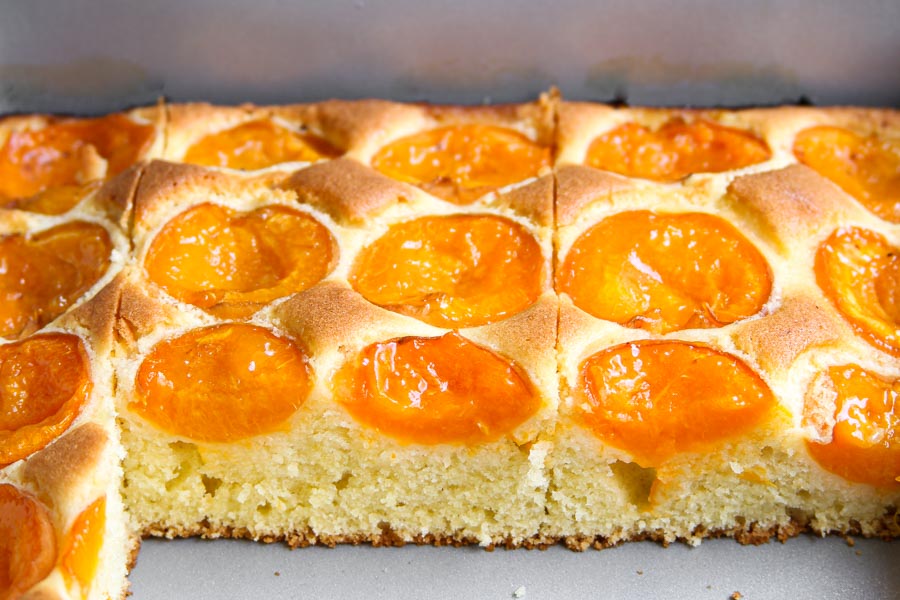
For a nice shine and extra apricot flavour you can stir together 1 tablespoon apricot jam and a little hot water and brush the apricots with this glaze when the cake comes out of the oven.
Let the cake cool, cut into squares and enjoy! Dust with powdered sugar, if desired.
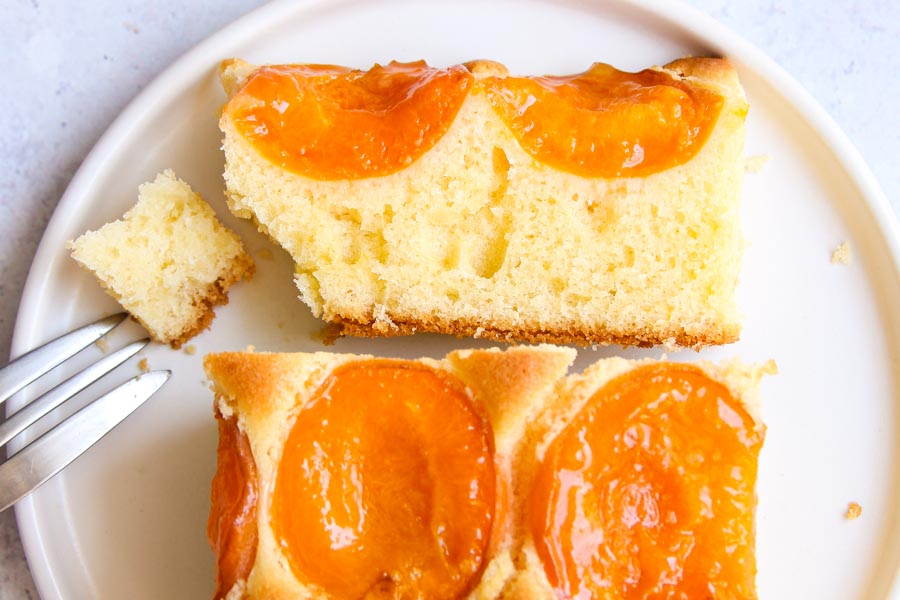
This cake tastes best on the same day. Store leftover cake well wrapped in the fridge to avoid spoilage and eat within 1-2 days. Simply bring it back up to room temperature to serve again, or wrap in tin foil and pop it into a hot oven for a few minutes. It also freezes well!
This fluffy sponge cake topped with fresh apricots is one of Austria’s most beloved cakes. The apricots on top go soft, sweet and juicy during baking and are clearly the highlight of this cake. You can make this cake with other stone fruit, like plums too (see recipe for my Easy plum cake).
Recipe: Ursula | lilvienna.com
Ingredients
- 2 pounds (1 kg) fresh and ripe apricots, smaller fruits preferred
- 1 stick + 6 tablespoons (200 g) unsalted butter, softened
- 1/2 + 1/3 cup (180 g) sugar
- 4 large eggs, separated and at room temperature
- 1/2 cup (120 g) sour cream (or Greek yogurt, if you don’t have sour cream on hand)
- 1 teaspoon vanilla extract
- zest from 1 organic lemon
- pinch of salt
- 2 1/3 cups (300 g) all-purpose flour
- 1.5 teaspoons baking powder
- powdered sugar for dusting (optional)
- 1 tablespoon apricot jam
- 2 teaspoons hot water (or rum, amaretto, …)
>> All ingredients should be at room temperature. Forgot to remove eggs and butter from the fridge? Place eggs in a bowl filled with warm tap water for a few minutes. Cut butter into thin slices or small cubes, distribute them evenly in a large mixing bowl, and let the butter soften on the counter (or outside, if warmer). During summer, the butter usually softens quickly.
Instructions
- Preheat the oven to 350 °F (175 °C) top and bottom heat. Grease a 9x13 inch (23x33 cm) baking pan with butter (see notes for larger sheets). I use about 2 teaspoons of the softened butter from the ingredients above for this. Alternatively, you can line the pan with parchment paper.
- Wash, halve, and pit the apricots, and set aside. Tip: You can use the pits to make homemade amaretto.
- In a large bowl, add the egg whites and a pinch of salt. Whip until stiff peaks form. No need to clean the beaters. Just use them in the next step.
- In another bowl, beat butter, sugar and egg yolks until thick and pale, about 5-10 minutes.
- Beat in the sour cream, vanilla extract, and grated lemon zest.
- Mix flour and baking powder and briefly stir them into the butter-egg mixture, until just incorporated.
- Fold in one half of the beaten egg whites to loosen the stiff batter. Gently fold in the remaining egg whites.
- Spread the batter evenly in the prepared pan.
- Top batter with apricot halves, skin side down. Distribute them evenly and leave only a little bit of space between them (straight rows will simplify cutting the cake). Make sure the cut side on top is placed horizontally so that the juices stay within the fruit halves while baking. Do not press the apricots into the batter as they will sink into the batter during baking.
- Bake the cake for about 45 minutes at 350 °F (175 °C) until golden. A wooden toothpick, inserted into the cake should come out clean or with a few crumbs clinging to it.
- Optionally, for a nice shine and extra apricot flavour: Stir together apricot jam and a little hot water and brush the apricots with this glaze when the cake comes out of the oven. Add more water if the glaze is not thin enough to brush on the fruit with a pastry brush.
- Let the cake cool, cut into squares and enjoy! Dust with powdered sugar, if desired.
- This cake tastes best on the same day. Store leftover cake well wrapped in the fridge to avoid spoilage and eat within 1-2 days. Simply bring it back up to room temperature to serve again, or wrap in tin foil and pop it into a hot oven for a few minutes. It also freezes well!
Notes
Using a 9x13 inch (23x33 cm) baking pan will result in a tall (2-inch / 5 cm) sponge. Alternatively, you can use a jelly roll pan (10x15 inch / 26x38 cm) or large European-size baking sheet (12.5x16 inch / 32x40 cm) as well, but the cake will turn out a bit flatter. Thinner cakes bake quicker, adjust baking times accordingly. For an 8-inch square pan use half of the ingredients. If you want to use a 10-inch (26 cm) round springform pan, please use ingredients from my easy plum cake as those are suitable for this size.

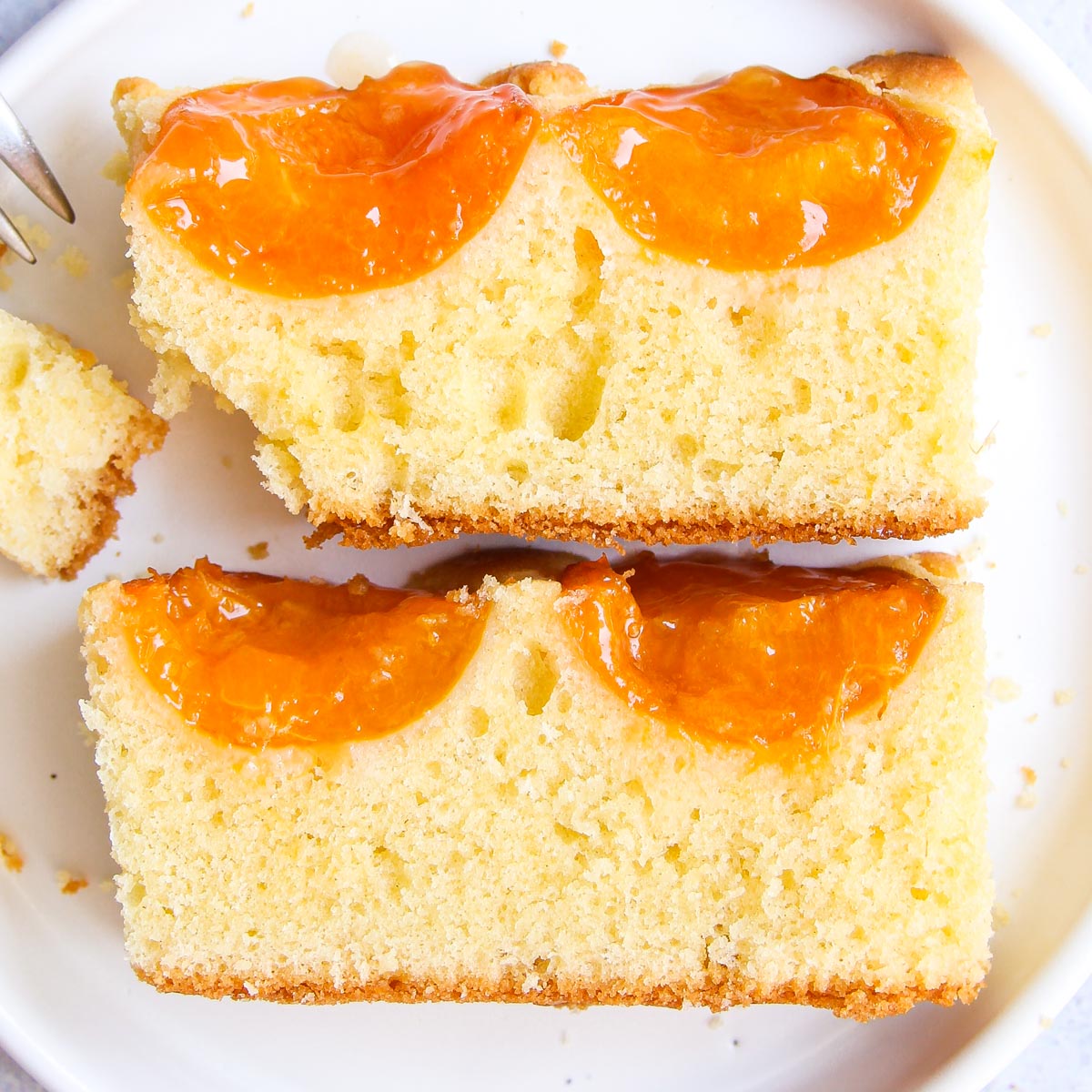
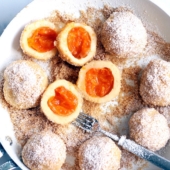
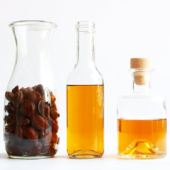
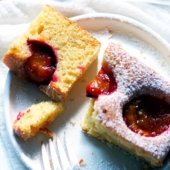
Made this today – I didn’t have enough apricots so I halved the recipe and it was DELICIOUS. Will certainly be making this again, and with other stone fruits as well. Thank you
Hi Brucie,
So happy to hear that you like it! Yes, it works with all sorts of stonefruit and even other fruits like berries or rhubarb. Thanks so much for your commment! Ursula
Can this recipe be used with different fruits successfully?
Hi Sheila,
Yes, definitely! I have already answered you directly via email, but I think it would be interesting for others to know as well. This cake batter can be used for different fruits. I especially like it with halved plums and mixed berries. Other stone fruit, like peaches, should be sliced before topping the cake – or you simply cut them into smallish cubes. Hope you’ll try it some time! Ursula
Oh wow, this recipe was simply amazing! I also only had half the amount of apricots but I had some cherries as well so I added them in between the apricots after cutting the recipe in half. The texture of the cake crumbs was perfect and this dessert was very moist, and had the perfect amount of sweetness. Thank you for this wonderful recipe, Ursula!
Hi Deborah,
Oh, so happy to hear that you enjoyed the cake and that it turned out so well. I bet the mix of cherries and apricots is delicious :) I use the cake base a lot and top it with different fruits. Ursula